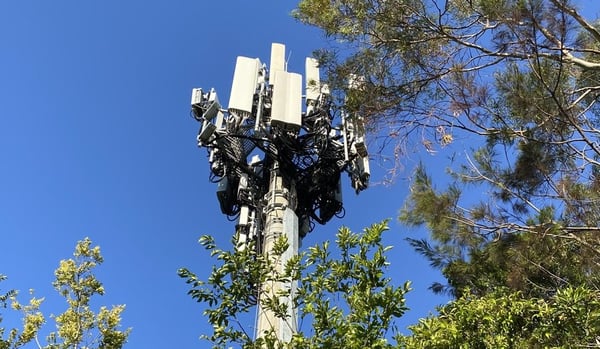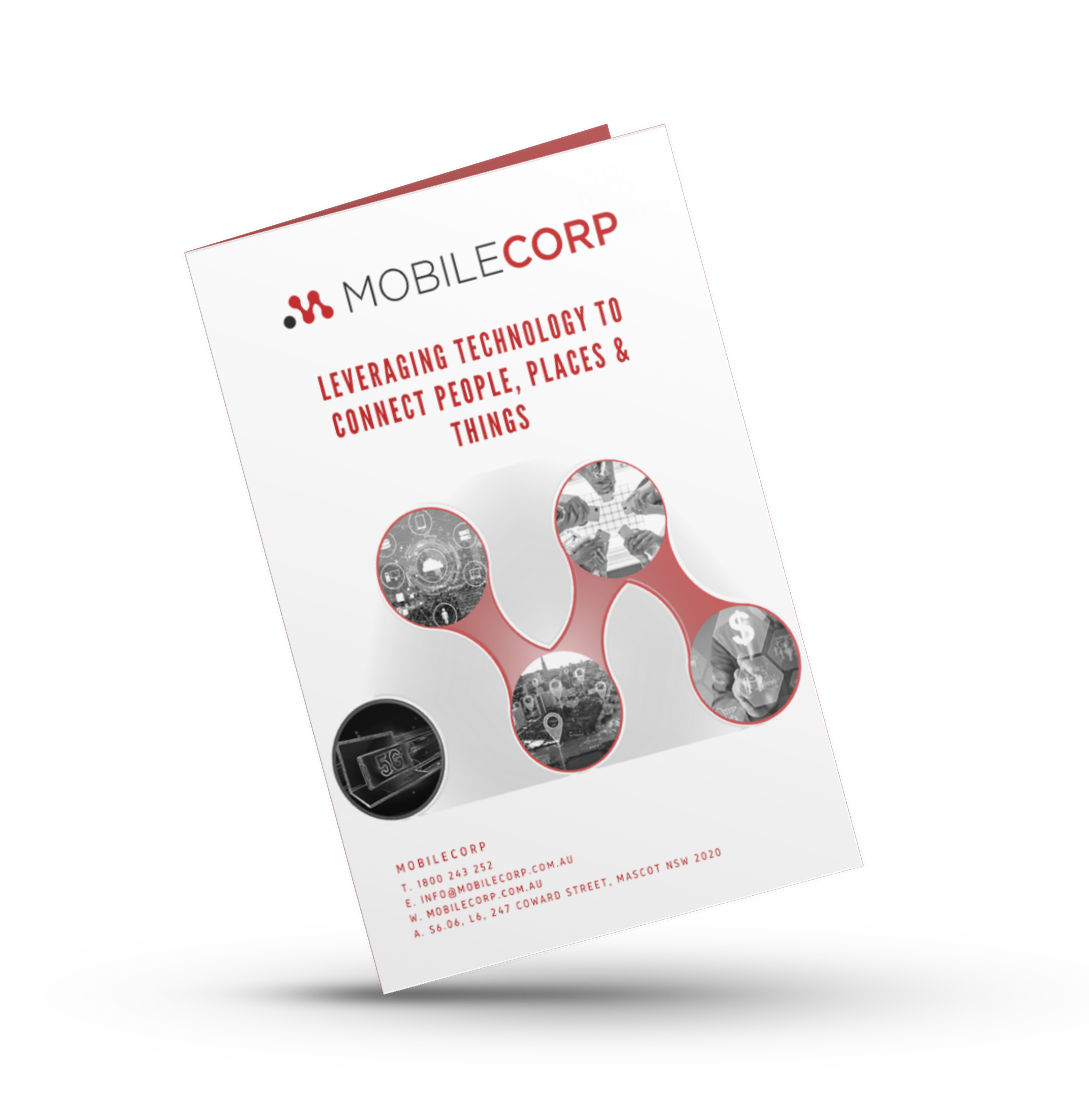Updated June 2024 - Telstra has hit another milestone along the journey to 5G by being first to complete a standalone 5G network. But what does this mean for Australian business and consumers?
5G Non-standalone v 5G standalone?
To understand the relevance of Standalone 5G, it is first necessary to know that 5G networks come in two formats: Non-Standalone (NSA) and Standalone (SA).
Telstra was the first Australian carrier to complete a standalone 5G network, and was also one of the first in the world to do so.
May 2020
What is a Non-Standalone 5G Network?
In a non-standalone network, 5G is built on top of the 4G network. It combines combines a 5G radio access network (RAN) with a 4G core. Smartphones connect to 5G frequencies for faster connectivity speeds, but still use 4G for communicating with mobile towers and servers. Non-standalone 5G is what we have seen in Australia to date, but the promise of Standalone 5G is a step closer with Telstra's capability announcement.
What is a Standalone 5G Network?
As the name suggests, the 5G network no longer relies on 4G for any part of its performance. It combines a 5G radio access network (RAN) with a 5G core.
The biggest benefit of Standalone 5G is lower latency. In plain terms, latency is the time it takes for information to get from your device - phone, router, IOT sensor - to the wider internet and back again. The typical latency for a 4G network is around 60 milliseconds, whereas 5G could eventually decrease this to as low as 1 millisecond. This massive decrease in latency will enable new technologies that require 'real time' processing and actions such as self-driving cars.

What does Standalone 5G mean for the Australian public ?
When this milestone was announced by Telstra back in 2020, there was no discernible benefit for consumers because there was no 5G-standalone devices in market that would work with the Telstra 5G network. Now we have many 5G-compatible devices available, however the benefits of SA 5G are still not going to be realised by individual consumers.
Telstra’s 5G SA network will initially be available to enterprises and developers only, not consumers. That's because it is business use cases that stand to gain most from SA's much faster connections, higher capacity, and low-to-zero latency.
The average consumer will be unlikely to spot the difference between the current NSA 5G and SA 5G. Most mobile users are simply streaming entertainment content and using social media over their networks – tasks that are already seamless.
What are the benefits of Standalone 5G for business?
For corporates, a SA 5G network is another milestone along the journey towards realising the promise of a 5G-enabled world.
The largest and most transformational benefits of 5G are only possible with standalone 5G, according to Telstra Group Executive, Networks & IT, Nikos Katinakos.
These benefits include ultra-reliable low latency, much higher capacity, massive machine type communications and advanced functions like network slicing.
"We’re already talking with some of our partners to see what they can do with this new upgrade to 5G. The capability is now in place for some exciting innovations from our enterprise business partners – for example, a branch office of a bank may be able to stand up and operate multiple applications and services using only a 5G Standalone capable device for network access, massively reducing the infrastructure required to set up."
Nikos Katinakos, Telstra Group Executive Networks & IT
Australian businesses should be evaluating 5G network slicing
Telstra's completion of a standalone 5G network is a clear indicator to business that it is time to get serious about evaluating the relevance of 5G, says Stephen Aravopoulos, managing director of Telstra Platinum Partner, MobileCorp.
The arrival of true SA 5G means Australian enterprise organisations will soon have access to 5G slicing. Customers will be able to access a secure slice of the SA 5G network with committed performance levels that deliver guaranteed speeds and uptime. For critical communications, this will be a game-changer.
Hindmarsh, one of Australia’s leading construction, real estate development, retirement services and capital management companies, is the first customer to trial the new solution.
Mark Crameri, Hindmarsh IT Manager said, “Telstra’s new 5G fixed wireless network slicing link was deployed at one of our heaviest use sites with over 30 staff, each with laptops and phones, along with tablets and video conferencing equipment.
“To date the reliability of the new link has been tremendous, access to our business-critical systems is incredibly fast, not to mention video conferencing and internet access, making it faster and easier to work productively on site.”

Hindmarsh has been trialling 5G network slicing with Telstra during 2023 and 2023-24
As far back as February 2022, Telstra, the Commonwealth Bank and Ericsson announced the first program in Australia to explore 5G edge computing use cases and network capabilities by testing end-to-end banking solutions over 5G.
5G edge computing was expected to simplify the network operations and complexity required at individual bank branches. This collaboration would explore optimal 5G coverage solutions and provide more flexibility for bank operations and locations.
While the outcomes of the trial have been kept under wraps, it is worth noting that the Commonwealth Bank spent $924 million on technology in the 2023 financial year as the banking sector engages in a tech arms race.
 The Commonwealth Bank of Australia began 5G trials with Telstra and Ericsson in early 2019.
The Commonwealth Bank of Australia began 5G trials with Telstra and Ericsson in early 2019.
Where are Optus and TPG Telecom at with Standalone 5G?
Australia's other two 5G network carriers are also working towards a Standalone 5G network.
Optus focused on SA 5G and mmWave
Optus announced it was switching on SA 5G in August 2022.
Prior to that Optus had a strategy of Dynamic Spectrum Sharing (DSS) which allows 4G and 5G data to travel along the same path, quickly switching between the two depending on which one the mobile device is using i.e. a non-standalone 5G network.
Optus CEO Allan Lew claimed Optus had "equivalent to what the leading provider (Telstra) has,” but conceded "the evolution may well be different."
Optus, is also focused on mmWave 5G. Lew said "access to mmWave spectrum will enable wireless enterprise services that could challenge the incumbent dominant provider of enterprise services – finally opening this market to competition."
TPG Telecom playing catch-up
TPG Telecom is still playing catch-up with Optus and Telstra.
When given the green light to proceed with its merger in March 2020, the MergeCo immediately signalled that 5G was at the forefront of their plans. CEO of TPG, David Teoh, said the delay had given Optus and Telstra a head start which they were determined to catch.
They are still chasing. In 2021, TPG Telecom and Nokia switched on a live SA 5G network in Australia on the 700 MHz spectrum band. In October 2023, TPG Telecom announced its expansion of SA 5G coverage to its brands iiNet, TPG, Internode and Westnet.
About MobileCorp
MobileCorp is an enterprise ICT solutions company with a mission to deliver our customers a communications technology edge. We are a Telstra Platinum Mobility Partner with a proven track record providing mobility managed services for Australian enterprise and business, and we are the Telstra Mobility Partner or the Year, 2023. Our solutions include Managed Mobility Services, Enterprise Mobility Management, Complex Data and IP Networks, and Unified Communication solutions.
Learn more at mobilecorp.com.au

5G Michelle Lewis 13 May 2020
Related Posts
Popular Tags
- Mobility (80)
- Mobile Devices (79)
- Telstra (65)
- 5G (60)
- MobileCorp Managed Services (55)
- Mobile Network (34)
- Networks (34)
- Cradlepoint (31)
- Apple (29)
- MobileCorp (29)
- iPhone (25)
- Remote Working (23)
- Covid-19 (16)
- Network (16)
- Mobile Security (15)
- Wireless WAN (15)
- Cyber Security (14)
- UEM (14)
- MDM (11)
- Mobile Expense Management (10)
- Mobile Device Management (9)
- TEMs (9)
- Mobile Device Lifecycle (8)
- Cloud (7)
- Unified Comms (7)
- Unified Communications (7)
- Wandera (7)
- Android (6)
- Sustainability (6)
- Data Networks (5)
- Network Security (5)
- Samsung (5)
- Security (5)
- Digital Experience (4)
- IOT (4)
- Microsoft Intune (4)
- IT Services (3)
- Microsoft (3)
- Data (2)
- Government (2)
- Microsoft 365 & Teams (2)
- Retail (2)
- nbn (2)
- webinar (2)
- Blog (1)
- EMM (1)
- Emerging Technologies (1)
- Hosted Telephony (1)
- Managed Desktops (1)
- SD-WAN (1)
- Starlink (1)
- Telstra Services (1)
- video (1)








